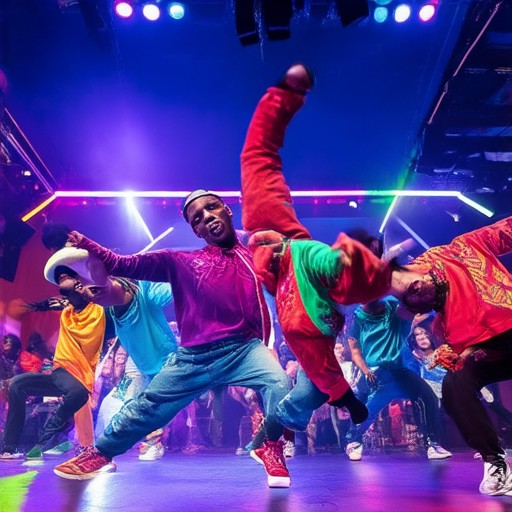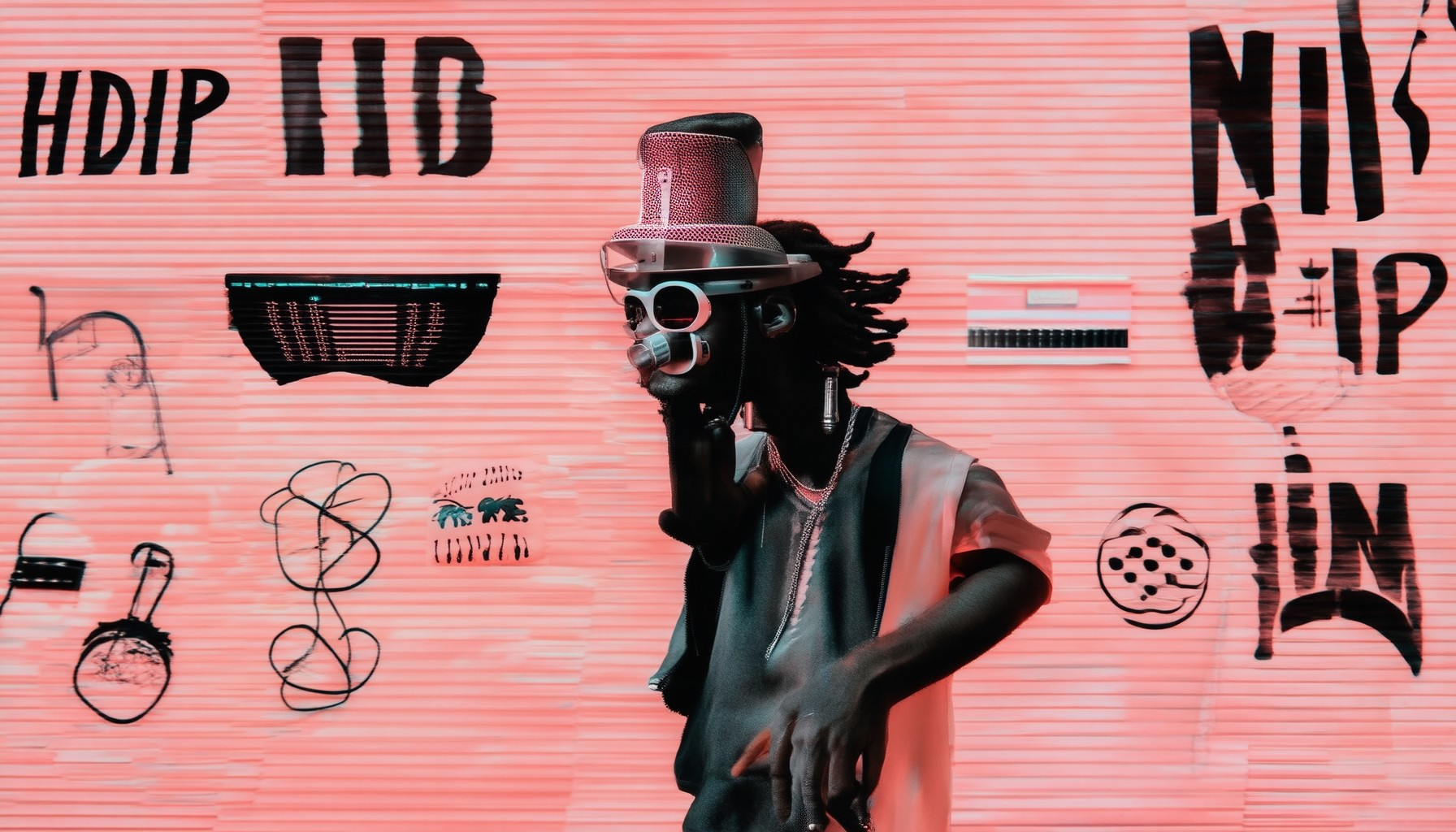Indie hip-hop has emerged as a vibrant and dynamic force in the world of music, offering a unique auditory experience that sets it apart from mainstream genres. With its distinct style, evolving sounds, and unfiltered creativity, indie hip-hop has carved out its own niche, attracting fans who appreciate its raw authenticity and artistic freedom. Whether you’re a seasoned music enthusiast or new to the scene, exploring the intricate details of indie hip-hop sounds is a journey worth taking. From its roots in alternative beats to its modern-day innovations, this genre continues to redefine expectations, blending elements of rap, rock, and experimental music to create something entirely unique. Join us as we delve into the fascinating world of indie hip-hop, uncovering its defining characteristics, influential artists, and the cultural impact that has made it a cornerstone of contemporary music.
Key Takeaways
– Indie Hip-Hop Blends Styles: This subgenre merges diverse influences, creating a unique sound that balances raw authenticity with innovative production.
– Focus on Rhythm and Rhyme: At its core, hip-hop thrives on a driving rhythm and intricate rhyme schemes, making it both danceable and thought-provoking.
– MCs and Beatmakers Drive the Sound: The genre’s heartbeat comes from skilled MCs delivering lyrical prowess and producers crafting beats with precision.
– Sampling is Key: The reuse of audio clips transforms into fresh sounds, a cornerstone of hip-hop’s creative process.
– Evolution and Global Influence: From its origins in African-American culture, hip-hop has grown into a worldwide phenomenon, shaping trends across music and culture.
– Impact Beyond Music: Hip-hop influences fashion, language, and social movements, leaving a lasting legacy.
– Father of Hip-Hop: Afrika Bambaataa, a pioneer, unified communities and laid the groundwork for the genre’s global success.

What is Indie Rap Style?
The indie rap style is a subgenre of hip-hop music that emphasizes authenticity, uniqueness, and a DIY approach. Unlike mainstream rap, which often focuses on commercial success and mainstream appeal, indie rap prioritizes personal expression and creative freedom. This style is characterized by its diverse soundscapes, introspective lyrics, and a strong connection to the artist’s identity.
Characteristics of Indie Rap Style
- Beats: The backbone of indie rap often features organic, lo-fi-inspired beats, boom bap rhythms, or a mix of electronic and live instrumentation. These beats provide a raw, unpolished feel that aligns with the genre’s independent spirit.
- Lyrics: Lyrics in indie rap tend to be deeply personal and reflective, often dealing with themes like self-awareness, mental health, social issues, and everyday life experiences. The storytelling is often narrative-driven and less concerned with conventional rhyming schemes.
- Artistic Vision: Many indie rappers view their music as a form of self-expression rather than a career path. This mindset allows for experimentation and innovation, blending genres like jazz, rock, and electronic music into their sound.
Notable Artists in the Indie Rap Scene
- Joey Bada$: Known for his smooth flows and introspective lyrics, Joey Bada$ has become a staple in the indie rap community with projects like 21 Days and B4 .
- J. Cole: While often associated with mainstream success, J. Cole’s early work, particularly True Masterpiece , exhibits the raw, emotional depth characteristic of indie rap.
- Kendrick Lamar: Before achieving widespread popularity, Kendrick Lamar explored deeper, more personal themes on projects like Section.80 , which align with the indie rap ethos.
- Moses Sumney: Known for his unique blend of rap and R&B, Moses Sumney’s Aporia EP showcases the genre’s potential for artistic exploration.
Examples of Songs and Albums
- Songs:
- “No Idea” by Joey Bada$
- “Fire” by J. Cole
- “DNA” by Kendrick Lamar
- “Wildfire” by Moses Sumney
- Albums:
- 21 Days by Joey Bada$
- B4 by Joey Bada$
- Aporia by Moses Sumney
Indie rap continues to evolve, pushing boundaries and challenging conventions within the hip-hop landscape. Its emphasis on individuality and creativity makes it a vibrant and dynamic genre that consistently delivers fresh perspectives and innovative sounds.
For more information about indie rap and to explore related artists, check out our curated playlists and in-depth articles on AbstractHipHop.com .
Is Indie Hip Hop a Thing?
Yes, indie hip hop is very much a thing. Underground hip-hop, often referred to as indie hip-hop or indie rap, is a vibrant and thriving subgenre that operates outside the mainstream commercial sphere of hip-hop music. This scene is characterized by its authenticity, diversity of sound, and a focus on originality rather than mass appeal.
Indie hip-hop artists often experiment with unique styles, blending elements of jazz, funk, electronic music, and spoken word poetry. This creative freedom allows them to explore uncharted territories within the genre, resulting in a rich and eclectic body of work.
Key Characteristics of Indie Hip Hop
- Authenticity: Indie hip-hop artists frequently tackle personal and social issues, providing a genuine reflection of their experiences and perspectives.
- Diverse Influences: The genre draws inspiration from a wide range of musical genres, including jazz, funk, and electronic music, leading to a varied and dynamic sound.
- Independent Production: Many indie hip-hop artists produce their own music, often recording in DIY studios or leveraging crowdfunding platforms to fund their projects.
- Community-Oriented: The indie hip-hop scene often thrives on a strong sense of community, with artists collaborating, promoting each other, and fostering a supportive environment.
Prominent Artists in the Scene
- Kendrick Lamar: While he has achieved significant mainstream success, Lamar’s early career was rooted in the indie hip-hop scene.
- J. Cole: Known for his storytelling abilities and deep lyrical content, J. Cole began his career in the indie hip-hop circuit before signing to a major label.
- Odd Future: A collective of artists who gained recognition through their raw and unfiltered style, often associated with the indie hip-hop movement.
- Tyler, The Creator: Known for his innovative blend of hip-hop, R&B, and alternative music, Tyler has been influential in pushing the boundaries of indie hip-hop.
The Rise of Indie Hip Hop
Indie hip-hop has seen significant growth over the years, thanks in part to the rise of streaming platforms and the internet, which have provided independent artists with greater visibility and distribution channels. Platforms like Bandcamp, SoundCloud, and YouTube have become crucial tools for indie artists to share their music and connect with fans worldwide.
Additionally, the genre has benefited from a strong online community, with forums, blogs, and social media groups dedicated to supporting indie hip-hop artists. This communal support has helped sustain the scene and foster creativity among its members.
Overall, indie hip-hop is not just a “thing” – it’s a thriving cultural movement that continues to evolve and influence the broader hip-hop landscape. Whether you’re a fan of mainstream hip-hop or prefer the raw authenticity of the indie scene, there’s something here for everyone.

The Five Elements of Hip-Hop
The heart of hip-hop culture revolves around five core elements that define its identity and evolution. These elements have transcended boundaries and continue to shape global music, art, and culture. Here’s a breakdown of each:
- MCing (Master of Ceremonies)
The backbone of hip-hop, MCing involves verbal storytelling, improvisation, and delivery. MCs use their words to tell stories, drop beats, and engage the crowd. Artists like Nas and Kendrick Lamar have elevated this element to legendary status, showcasing their lyrical prowess and social commentary. - DJing
DJs are the architects of hip-hop, using turntables, mixers, and loops to create rhythmic beats from existing records. DJing requires technical skill, creativity, and an ability to blend genres seamlessly. Icons like Afrika Bambaataa and DJ scratching have redefined this art form, making it a cornerstone of hip-hop performances. - Breakdancing
Often referred to as b-boying, breakdancing combines acrobatics, precision, and fluidity. Dancers move to the rhythm, executing intricate moves like spins, flips, and footwork. Groups like the Electric Boogaloos and The Rock Steady Crew have popularized this element worldwide, turning it into a global dance phenomenon. - Graffiti
A visual art form, graffiti uses spray paint, markers, and stencils to create vibrant, often politically charged murals. Artists like Banksy and Jean-Michel Basquiat have brought graffiti into mainstream attention, using it as a medium for self-expression and social commentary. - Knowledge
The fifth element encompasses understanding and preserving hip-hop’s history, culture, and values. It’s about being aware of the roots of the genre, from its African origins to its contributions to social justice movements. Knowledge ensures that hip-hop remains a powerful tool for education, empowerment, and cultural preservation.
These five elements work together to create a dynamic and evolving cultural force. From the lyrical depth of MCs to the visual storytelling of graffiti artists, hip-hop continues to inspire and influence generations worldwide.

What is the Sound of Hip-Hop?
The sound of hip-hop is a dynamic and evolving musical genre characterized by its distinctive rhythm, rhyme, and style. At its core, hip-hop is defined by:
- Rhythm and Rhyme: A driving beat that combines elements of funk, reggae, and electronic music, creating a hypnotic pulse that is both danceable and thought-provoking. The rhythmic foundation is often layered with intricate patterns and tempos.
- Verse and Chorus Structure: Songs typically feature verses, choruses, and sometimes bridges, with rappers delivering their lyrics over the beat. The rhyme scheme is crucial, with complex wordplay and storytelling.
- Instruments: While drums and bass are foundational, modern hip-hop incorporates a variety of sounds from live instrumentation to synthesized beats. Turntables and DJ scratching are iconic elements, creating scratch effects that add texture to tracks.
Key Components of Hip-Hop Music
- MCs (Master of Ceremonies): The rappers who deliver bars (lyrics) with precision and flair, using their voice as an instrument. Their delivery ranges from smooth storytelling to aggressive shouting, depending on the style.
- Beatmakers: Producers who craft the instrumental tracks, blending samples, loops, and live performances to create the sonic landscape.
- Sampling: The reuse of audio clips from various genres, often transformed into something new and unique, is a cornerstone of hip-hop production.
Evolution and Influence
Over time, hip-hop has expanded beyond its roots in African-American culture to become a global phenomenon. It has influenced countless subgenres and continues to evolve, incorporating elements from rock, pop, Latin, and Asian music. Its impact extends beyond music, shaping fashion, language, and social movements.
For deeper exploration of the genre, visit [Abstract Hip Hop](https://abstracthiphop.com/) to discover avant-garde production techniques and cutting-edge artists pushing the boundaries of hip-hop culture.
How to Tell If a Song Is Hip-Hop
To identify if a song falls under the hip-hop genre, consider the following key characteristics:
- Rhythmic Pattern : Look for a strong, syncopated rhythm with offbeat timing. This is a hallmark of hip-hop music.
- Rhyme Scheme : Most hip-hop songs feature complex rhymes schemes, often with rapid delivery and intricate wordplay.
- Lyrical Content : The lyrics typically involve storytelling, social commentary, or personal narratives delivered by MCs or rappers.
- Sampling : While not universal, sampling of previous recordings is a common practice in hip-hop production.
- Vocal Delivery : Expect a prominent vocal presence, often with rapping or singing, accompanied by beatboxing.
- MC Presence : Many hip-hop tracks feature rappers or MCs delivering verses alongside the instrumental tracks.
- Atmosphere : The overall vibe often feels gritty, authentic, and rooted in urban experiences.
- Tempo Variation : Songs may shift between faster and slower tempos, reflecting the genre’s dynamic nature.
By paying attention to these elements, you can better discern whether a song aligns with the hip-hop genre.

The Father of Hip-Hop
Afrika Bambaataa is widely regarded as the father of hip-hop. Born on December 17, 1950, in the Bronx, New York City, he is a pivotal figure in the development of the hip-hop culture and music genre. Bambaataa played a crucial role in the late 1960s and early 1970s, helping to establish the cultural foundation of hip-hop through his contributions as a DJ, promoter, and community organizer.
As the leader of the Universal Zulu Nation, Bambaataa was instrumental in unifying various African-American communities in the Bronx. His efforts led to the creation of block parties, which became the precursor to modern-day hip-hop events. These gatherings featured DJs spinning records, emcees (MCs) performing, and dancers showcasing their skills. Bambaataa’s influence extended beyond music, as he also focused on social issues and community empowerment, making him a respected figure in the hip-hop community.
While figures like DJ Kool Herc are often cited for their contributions to the cultural aspects of hip-hop, such as the development of the “Herc” style of MCing and the creation of the breakdance, Afrika Bambaataa’s role in fostering unity and promoting the genre’s growth makes him the most commonly acknowledged progenitor. His work laid the groundwork for the evolution of hip-hop into the global phenomenon it has become today.
For more information on Afrika Bambaataa and the history of hip-hop, visit AbstractHipHop.com .





0 Comments